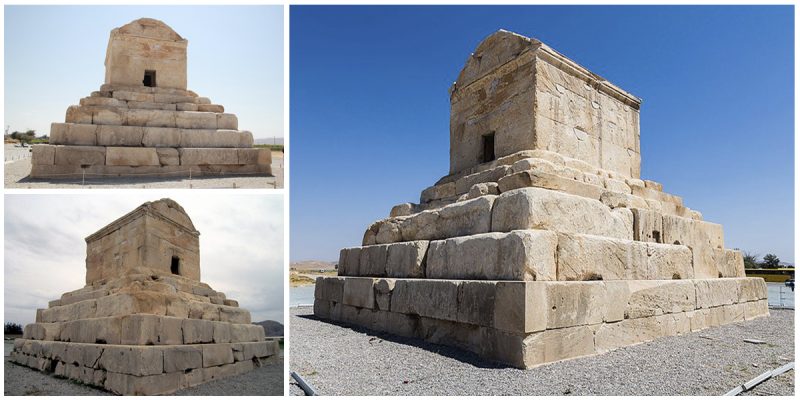In the middle of the Iranian desert, in the ancient town of Pasargadae, stands the Tomb of Cyrus the Great, a monument to one of the most important rulers in Persian history. Cyrus was the founder of the Achaemenid Dynasty (c. 550-330 BC), which became the world’s largest empire before it was eclipsed by that of Alexander the Great.
As the “father of the Iranian nation,” Cyrus II of Persia, known as Cyrus the Elder by the Greeks, was the first world leader to be given the epithet “the Great,” due to his conquering the Median, Lydian, and Neo-Babylonian empires.
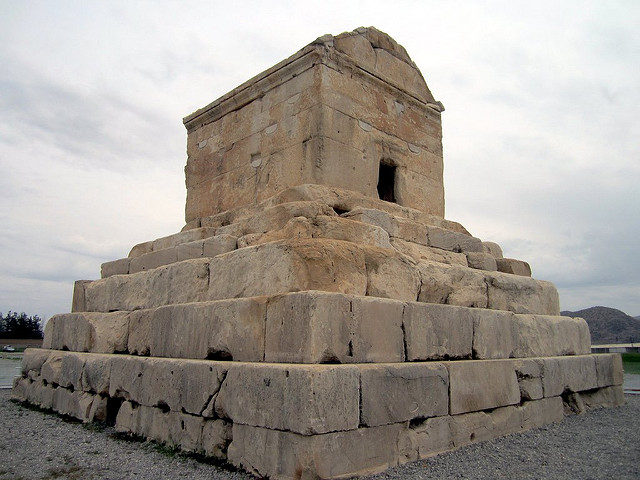
The tomb was discovered by Alexander the Great in the late 4th century B.C. when he had conquered the Persian Empire. The most extensive description can be found in the Anabasis, the history of the campaigns of the Macedonian king, composed by Arrian of Nicomedia in the second century AD. It is the fullest surviving account of Alexander’s conquest of the Persian Empire, which survives complete in seven books. According to Arrian’s writings, Alexander commanded the Greek historian Aristobulus, who accompanied Alexander on his campaigns, to enter the tomb.
Inside he found a gold coffin, various ornaments studded with precious stones, and a table set with drinking vessels. The tomb was originally ornamented with an inscription that, according to Strabo’s notes, the famous Greek geographer, philosopher, and historian, stated: “O man! I am Cyrus the Great, who gave the Persians an empire and was the King of Asia. Grudge me not, therefore, this monument.”[1] The inscription, with minor variations, was also mentioned by Plutarch and other ancient sources. However, no trace of any such inscription survives today.
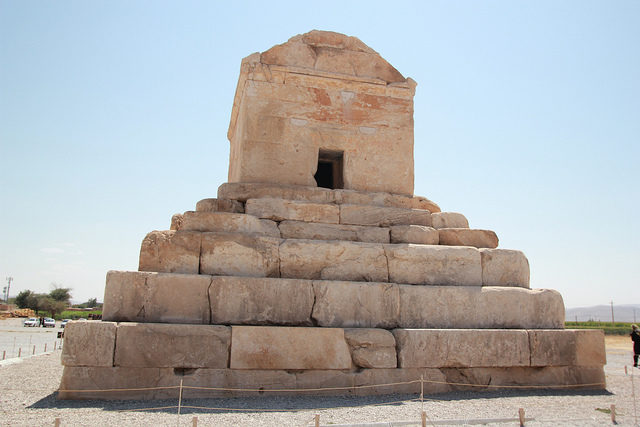
The tomb is believed to be the oldest base-isolated structure and also one of the first earthquake-protected structures in the world. It consists of two sections – a lower part and an upper part. The design of the lower part of the tomb is credited to Mesopotamian or Elamite ziggurats (massive structures built for local religions).
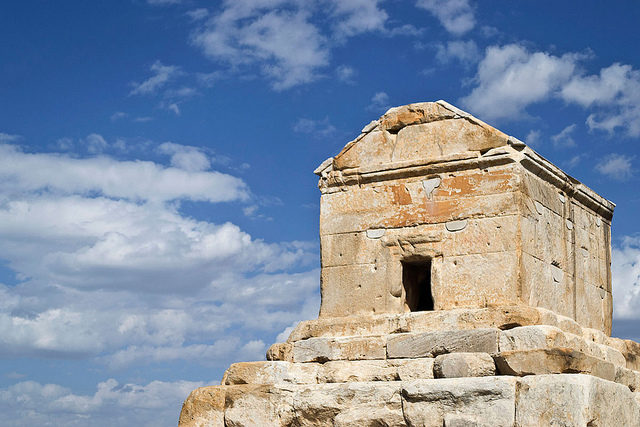
The upper part contains the tomb chamber itself, which is similar to those of the Urartu Tombs of the Iron Age period. Next to the chamber is another room but the exact function of this room remains unknown. After the tomb’s construction, this type of architecture became more prominent throughout Persia. Compared to those of other ancient kings and rulers, the design of the tomb depicts extreme modesty and simplicity.
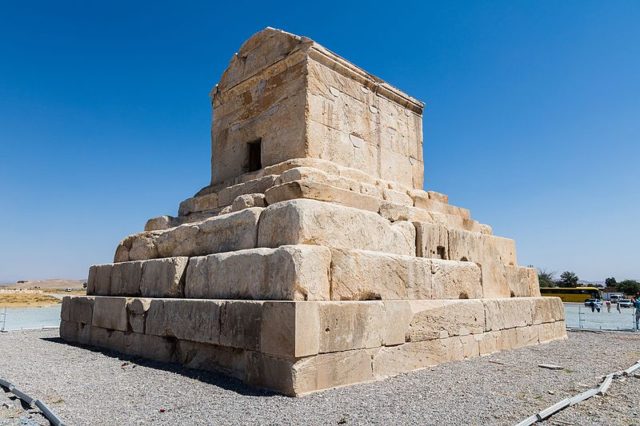
In about 550, Cyrus became king of Media and founded the first world empire – and the second Iranian dynastic empire (the Achaemenids) after defeating the Median king Astyages, who suppressed his own people. He brought many other nations and ethnic groups under the same flag of the Persian Empire. Cyrus II was not only famous for founding the Achaemenid Empire, which embraced all the previous civilized states of the ancient Near East, but he also enforced one of the most revolutionary policies – a policy of tolerating the different ideas, traditions, and beliefs of the places he conquered. He never forced anyone to change to conform to what he believed. A liberal and compassionate ruler who even spared the lives of his enemies.
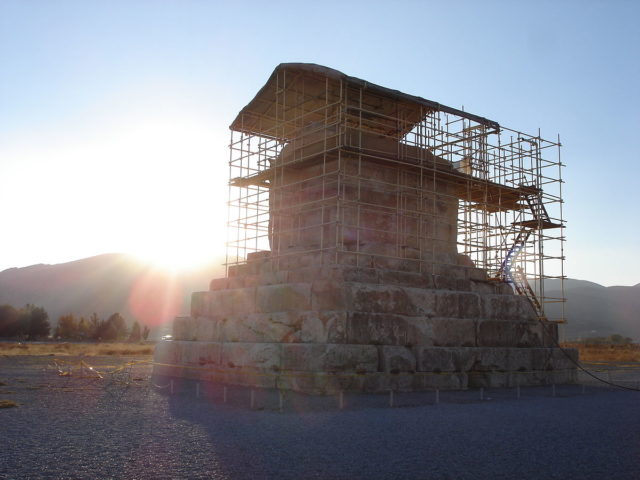
According to legend, Cyrus died in 530 or 529 BC during a battle with the nomadic Massagetae people, famous for their warrior queen Tomyris, who avenged the death of her son. It was a battle where the Persian forces suffered heavy casualties.
Although the city of Pasargadae is now in ruins, the burial place of Cyrus the Great has remained largely intact and today it is an archaeological site listed as a UNESCO heritage site to help protect such an influential part of Iranian history.
